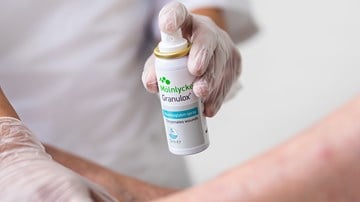Surgical care does not end when the surgery ends
Can you optimise healing with your post-operative dressing change protocol? Surgical care does not end when the surgery ends. Successful outcomes also depend on post-surgical incision care. Wound care dressings are a vital part of the healing equation because post-operative wounds are susceptible to infection and associated complications.
Download Consensus document
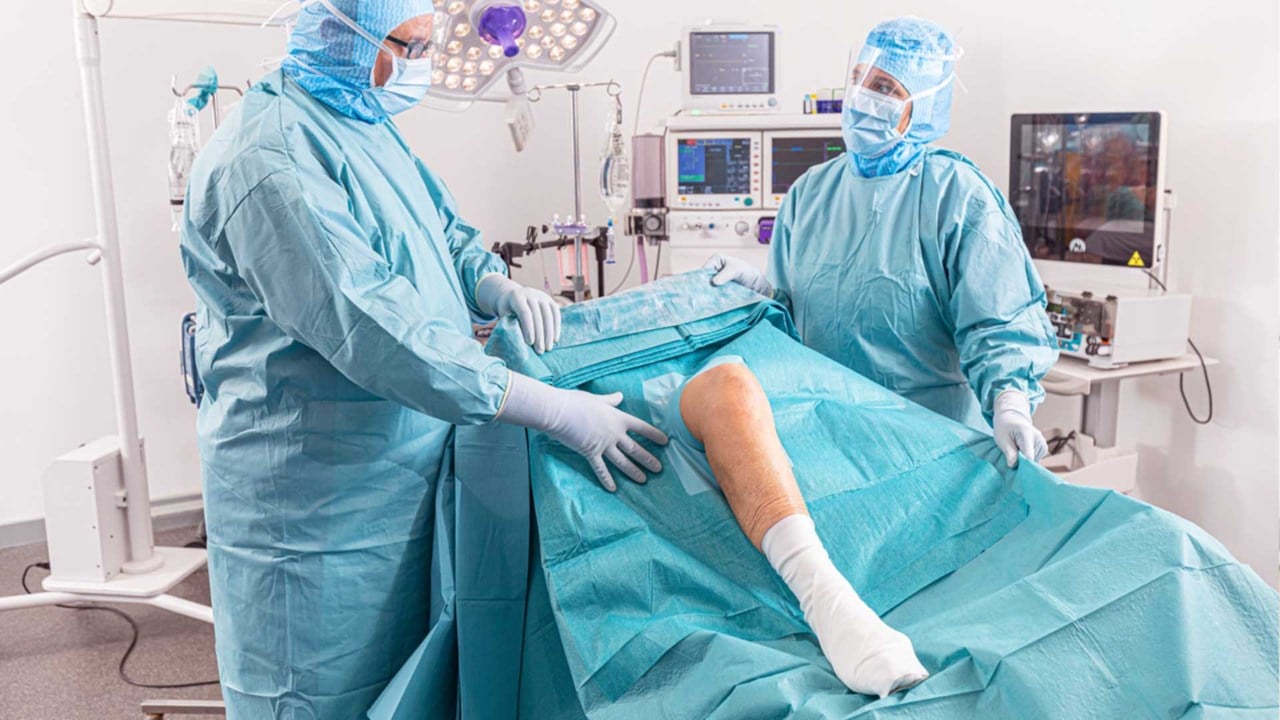
Traditional dressing change protocols, which rely on changing dressings on a schedule, whether or not a change is needed, can disturb wound healing. This can slow or stop healing entirely, exposing post-operative wounds to contamination and increasing the risk of a superficial Surgical Site Infection (SSI). Post-operative dressing change protocols need to change to reflect changing clinical understanding.
Similarly, post-operative wound care is dominated by conventional dressings, typically comprising a non-woven with an acrylic adhesive and an absorbing pad. These dressings tend to be low absorbing, lack barrier function and often cause painful skin damage. This type of dressing has been used for decades, and dressing change protocols are often simply a consequence of following ritualistic processes that have always been done. The 'always been done this way' approach of the frequent dressing changes necessitated by poor-absorption dressings can lead to the risk of contamination, higher costs of care in both material and clinician time, and disturbed healing. Looking into the future, what should a post-operative dressing protocol look like? What should be demanded of a post-operative dressing?
New post-op dressing protocols for optimal healing
These were the questions discussed by a team of senior surgeons who came together to discuss post-op dressing challenges. The conclusions of their meetings were recently published as Incision care and dressing selection in surgical wounds: Findings from an international meeting of surgeons.
The team of surgeons discussed the concept of undisturbed wound healing as being as relevant for acute wounds as for chronic wounds. Ritualistic dressing changes prescribed by existing protocols cause unnecessary disturbance – and risk of contamination.
The team of surgeons unanimously concluded that post-op dressings are changed too often, and that undisturbed healing is optimal healing. Post-surgical dressing changes, the surgeons agreed, should only occur when there is a clinically relevant reason to do so, such as:
- Saturated or leaking dressing
- Excessive bleeding
- Suspected local/systematic infection (e.g. local wound pain, redness, swelling)
- Potential dehiscence
In other instances – leave the dressing in place!
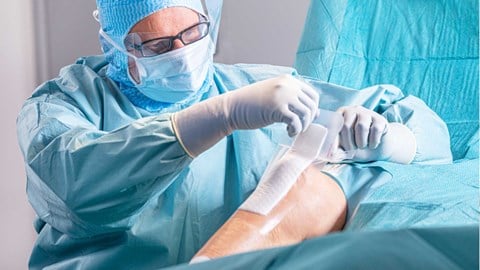
Understanding the full patient journey
On overcoming barriers to undisturbed healing, the surgeons discussed the importance of considering the whole patient journey. It is a combination of clinicians being fully aware of the benefits of undisturbed healing, and evaluating the healing situation, patient condition and dressing condition at each step of the process. Clinicians will need to orient themselves to the rationale and benefits of leaving dressings in place. The other part of the combination of factors contributing to better adherence to undisturbed healing is education. Clinicians will need to share the rationale and benefits of undisturbed healing with patients and be able to communicate these reasons effectively to the patient.
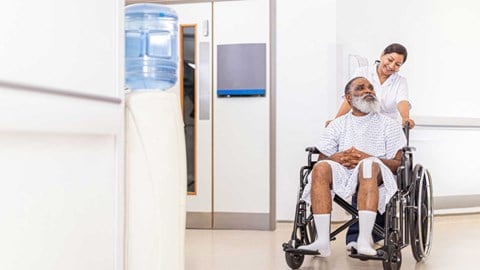
Education for clinicians and patients: Putting it into practice
Thinking about the full patient journey and understanding the reasons for encouraging undisturbed healing is one thing. Putting it into practice, and convincing patients it is best practice, requires:
- Changing habits and adopting new approaches
- Changing how you observe
- Asking more questions.
The need to ask more questions arises when determining whether or not to disturb the patient’s wound. The temptation, and habit, of ritualistic dressing changes would indicate that you inspect the wound after 24 hours. But now you need to set into motion a series of questions:
- Why disturb and risk contamination?
- What are you looking for? You might think you are looking for signs of infection, but such signs, in normal cases, are not visible until several days after a surgical procedure. What you see after 24 hours could be mistaken for infection but is much more likely to be inflammation – a perfectly normal bodily response to trauma.
- How often do I take action based on what I see? Most likely the answer is 'never' or 'rarely'.
Making meaningful changes relies on clinicians asking these questions about protocols and materials, and starting to change habits, practices and thinking. By extension, it relies on educating patients to shift their expectations and help them to understand the importance of undisturbed wound healing.

An ideal post-op dressing protocol
What is a good dressing change protocol, then? According to the World Union of Wound Healing Societies (WUWHS), the bottom line is: use a dressing that allows a long wear time. So much of existing dressing change protocols can depend on routine, ritual and habit. This means, of course, that things are done on a pre-determined schedule following a ritualistic process, but this does not mean that dressing changes are carried out when they are clinically necessary. The WUWHS recommendation to adopt long-wearing dressings supports:
- Dressing change when only clinically required
- Undisturbed healing
Dressing change protocols and preferences vary. This expert group agreed that undisturbed wound healing is key, and easier to achieve by reducing reliance on ritualistic dressing change protocols. Dressing change ‘ritualism’ is identified as a wider issue in wound care, and ignores the needs and preferences of individual patients. This particularly applies to post-surgical incision wounds, where protocols can be in place regardless of individual clinical need. Incision care is an area with specific dressing needs. Consideration needs to be given to:
- Individual needs and preferences
- The wound, its type and condition
- Appropriate dressing selection, as long-wearing dressings are designed specifically to stay in place for multiple days
Apart from changing protocols, a shift in mindset is also required to make undisturbed wound healing a priority in post-operative wound care. Helping to change the mindset can also be kickstarted by asking questions about 'how things have always been done' as well as what you, as a clinician, are doing right now as you consider a potentially unnecessary dressing change based on an outdated protocol:
- What is the dressing change protocol?
- How often have you taken action based on what you saw in your post-surgical inspection?
- Are there signs of something not being right (have there historically been signs, or did you check based only on protocol)?
- What role do dressings – and undisturbed healing – play in reducing SSI?
- Could a dressing change increase the risk of contamination?
Armed with new rationale to support dressing change decision-making, and both a changed protocol and material support in the form of long-wearing post-surgical dressings, undisturbed wound healing is possible, helping lead to cost reductions – and most importantly – better patient outcomes.
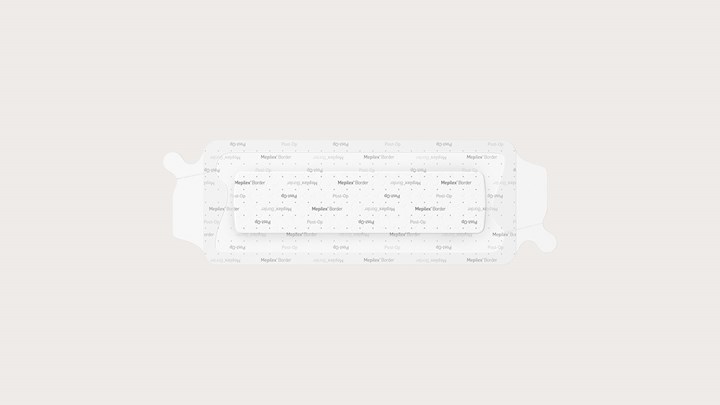 Mepilex Border Post-Op
Mepilex Border Post-Op
All-in-one post-op dressing with extra flexibility for patient mobility
Learn more about the dressing